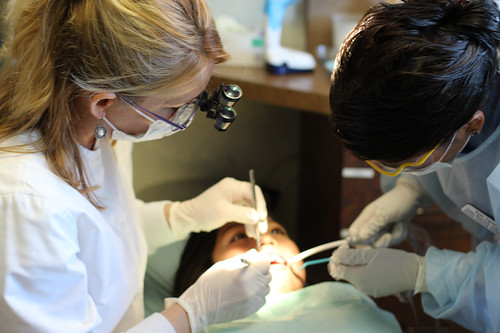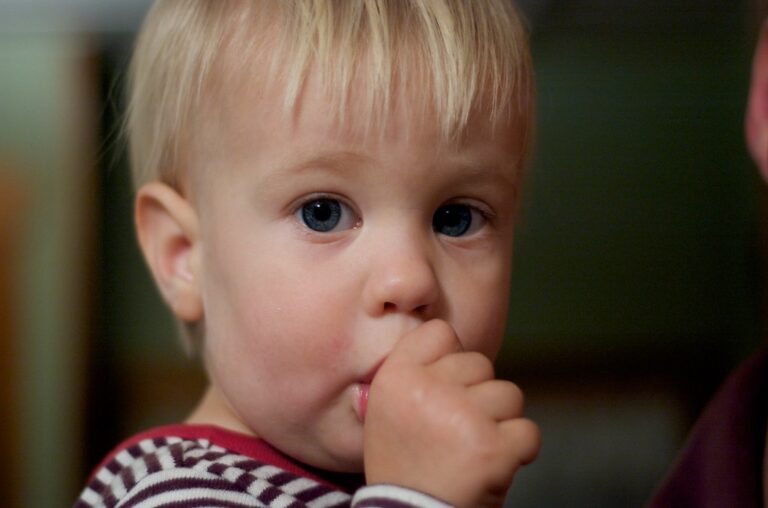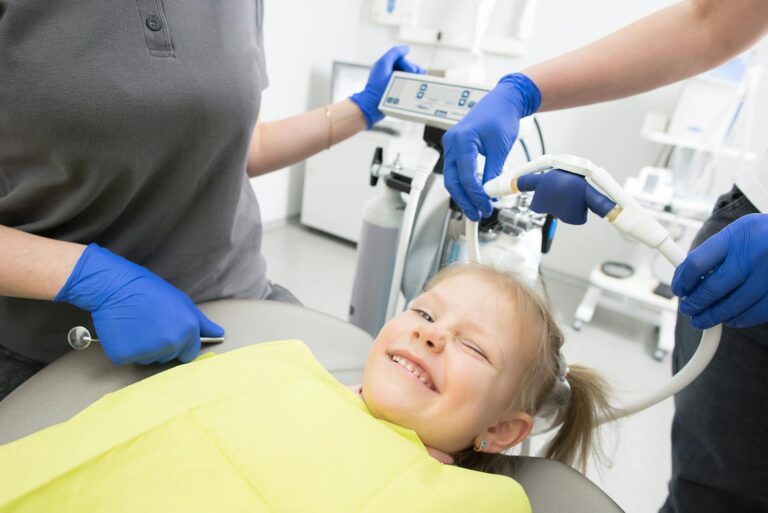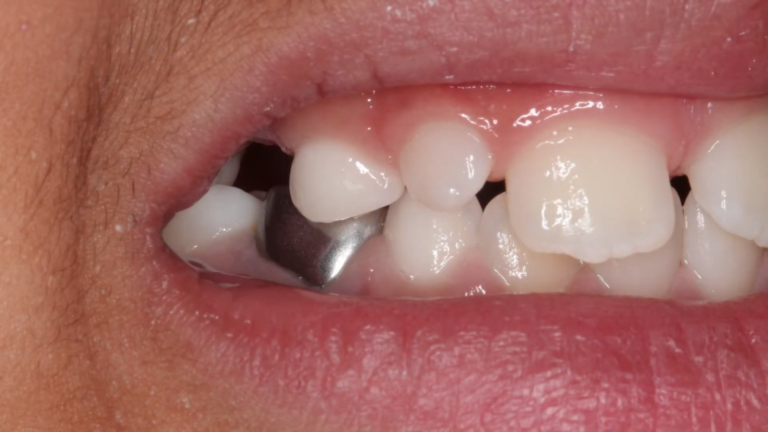How Often Should Kids Get Dental Checkups?
As a parent, it’s easy to wonder how often your child really needs to see the dentist. If their teeth look fine, they’re brushing daily, and they aren’t complaining of any pain, does that mean you can skip the next visit?
The short answer: No. Regular dental checkups are essential for maintaining your child’s oral health—not just for treating problems, but for preventing them in the first place. According to the American Academy of Pediatric Dentistry (AAPD), children should visit the dentist **every six months**, starting from the time their first tooth appears or by their first birthday, whichever comes first.
Let’s explore why these regular visits are so important, what happens during a checkup, and when some children might need to be seen even more frequently.
Why Every Six Months?
Children’s mouths change rapidly—far more quickly than adults realize. As baby teeth erupt, fall out, and make way for permanent teeth, their oral environment is in constant development. During this time, children are also learning how to brush, floss, and care for their teeth independently, which means they may not always clean effectively or consistently. As a result, their risk of developing cavities and gum issues is often higher, particularly in the early years.
Scheduling dental checkups every six months allows your child’s dental care team to stay one step ahead of these changes. Here’s what those routine visits help accomplish:
- Closely Monitor Tooth Eruption and Jaw Development
A dentist can track how your child’s teeth are coming in, whether their bite is aligning properly, and if there are any concerns with spacing or crowding that may require early orthodontic guidance. - Catch Tooth Decay Before It Becomes a Bigger Problem
Tooth decay can develop quickly in children, and often without obvious symptoms at first. Regular checkups allow the dentist to detect small areas of decay before they become painful or require more invasive treatments like fillings or extractions. - Provide a Professional Cleaning Beyond the Toothbrush
Even the most diligent child can miss plaque and food particles, especially in hard-to-reach places like the back molars or between tight teeth. A professional cleaning removes this buildup before it can turn into cavities or cause gum inflammation. - Track Oral Habits That Affect Dental Health
Habits like thumb sucking, pacifier use, tongue thrusting, and mouth breathing may seem harmless, but over time, they can affect the shape of the jaw, the position of the teeth, and even speech development. Regular visits allow the dentist to identify these habits early and offer advice on managing them. - Offer Preventive Treatments That Strengthen and Protect Teeth
Many dentists apply fluoride varnish during checkups to strengthen tooth enamel and reduce the risk of decay. In older children, dental sealants may be recommended to protect the deep grooves of molars where cavities are most likely to form. - Teach Healthy Habits to Children and Parents
Dental visits are an opportunity for both children and caregivers to receive personalized guidance on brushing technique, flossing, diet choices, and oral hygiene routines tailored to your child’s specific age and needs. - Identify Early Signs of Other Oral Health Issues
Conditions like gingivitis (early gum disease), enamel hypoplasia (weakened enamel), or even signs of teeth grinding can be spotted early during routine visits—long before they begin to cause discomfort or damage.
The truth is, waiting until your child complains of pain is often too late. By that time, what could have been a minor issue might already require more extensive (and expensive) treatment. Six-month checkups create a rhythm of preventive care that protects your child’s smile and ensures they grow up with a healthy, confident relationship with the dentist.
These regular visits are not just about cleaning teeth—they’re about setting the foundation for a lifetime of oral health.
What Happens During a Pediatric Dental Checkup?
A pediatric dental checkup is designed to be more than just a quick look at your child’s teeth. It’s a well-rounded visit focused on prevention, education, comfort, and creating a positive relationship between your child and oral care from an early age. Pediatric dentists and their teams are trained to work at your child’s pace, making the experience gentle, supportive, and even fun.
Here’s a more in-depth look at what typically happens during a routine visit:
1. Comprehensive Oral Examination
The dentist will begin by gently examining your child’s mouth, looking closely at the teeth, gums, tongue, cheeks, jaw joints, and bite alignment. They’re checking for early signs of tooth decay, gum inflammation, oral lesions, tooth eruption patterns, and any developmental concerns with the jaw or spacing. For younger children, this may be done in the “knee-to-knee” position—where the child sits on your lap and leans back into the dentist’s lap—for added comfort and security.
This part of the visit is crucial for spotting issues that are not yet visible to the naked eye and for monitoring how your child’s mouth is growing over time.
2. Gentle and Thorough Professional Cleaning
Next, a dental hygienist (or the dentist, in some cases) will perform a careful cleaning to remove plaque and tartar buildup, especially in areas that children often miss during daily brushing—like behind the molars or along the gumline. The cleaning may include polishing the teeth with a flavored paste and using a small rotating brush that feels like a gentle tickle on the teeth.
This step helps prevent cavities and gum problems while also giving the dental team a chance to teach your child how to improve their brushing and flossing technique at home.
3. Fluoride Treatment for Strengthening Teeth
Depending on your child’s age and cavity risk, the dentist may apply a fluoride varnish or gel to help strengthen the enamel and protect against decay. This treatment only takes a minute or two and is completely painless. The fluoride sticks to the teeth and is absorbed over the next several hours, providing ongoing protection.
Children who are more prone to cavities or who have weaker enamel benefit greatly from these treatments, which are often applied every six months.
4. Dental X-Rays (When Appropriate)
X-rays may be recommended if your child is at risk for cavities, has crowded teeth, or is at an age when the dentist needs to assess how the permanent teeth are developing under the gums. These low-dose images allow the dentist to see what’s happening beneath the surface—between teeth, inside the roots, and along the jawbone.
Your child will wear a protective lead apron, and the process is quick and child-friendly. Not every visit requires X-rays; the dentist will decide based on your child’s age, health history, and specific needs.
5. One-on-One Discussion With the Dentist
At the end of the visit, the dentist will take time to talk with you about your child’s oral health. They’ll go over the results of the exam and cleaning, answer any questions you have, and offer tips on how to support your child’s brushing and flossing habits at home. If there are any concerns—such as thumb sucking, nighttime grinding, or dietary habits—they’ll address those as well.
This discussion is also your opportunity to raise any concerns you’ve noticed, whether it’s about your child’s teeth, behavior during brushing, or even habits like mouth breathing or speech delays.
When Might Children Need More Frequent Visits?
While the general recommendation for most children is to visit the dentist every six months, there are certain situations where more frequent checkups—every three to four months—may be not only helpful but necessary. These additional visits allow the dental team to monitor the child’s condition more closely, prevent minor issues from becoming major problems, and adjust treatment plans as needed.
Here are some of the most common scenarios in which a child may benefit from a more frequent dental schedule:
1. Children with a History of Frequent Cavities
If your child has had multiple cavities in the past, they are considered at higher risk for future tooth decay. Plaque can accumulate quickly, and even with good home hygiene, these children may require more frequent cleanings and fluoride treatments to protect their teeth. More frequent visits allow the dentist to catch new decay early—sometimes before it’s visible or painful—and apply preventive strategies before a small issue grows into a larger one.
2. Children Wearing Orthodontic Appliances
Braces, retainers, expanders, and space maintainers can make brushing and flossing more difficult. Food particles and plaque easily get trapped around wires and brackets, increasing the risk of decay and gum irritation. Regular professional cleanings every few months help keep the teeth and gums healthy throughout orthodontic treatment. These visits also give the dentist a chance to monitor any enamel demineralization (early white spots), which is a common side effect of inadequate cleaning around braces.
3. Children With Special Healthcare Needs
Children with developmental, physical, behavioral, or medical challenges often have unique oral health considerations. For example, certain medications can cause dry mouth, which raises the risk of cavities. Some children may have difficulty with at-home oral hygiene due to sensory sensitivities or physical limitations. In these cases, more frequent dental visits ensure that their oral health is closely monitored and supported with tailored care that addresses their individual needs.
4. Children Prone to Excessive Plaque and Tartar Buildup
Some children naturally produce more plaque or have diets that make it easier for plaque to build up. Others may struggle with effective brushing and flossing, especially younger children who haven’t yet developed strong oral hygiene habits. Frequent visits allow for regular deep cleaning to remove plaque and tartar that could otherwise lead to inflammation, gingivitis, or cavities.
5. Children Receiving Treatment for Gum Disease or Oral Infections
If your child has early signs of gum disease (such as bleeding gums, redness, or swelling), or is being treated for other oral health conditions like chronic mouth ulcers or persistent bad breath, shorter intervals between visits are essential. These follow-ups help track progress, manage symptoms, and ensure that any treatments are working effectively.
How the Dentist Determines the Right Schedule
Every child is unique. That’s why pediatric dentists don’t take a one-size-fits-all approach. Based on your child’s age, medical history, oral hygiene habits, dental development, and risk factors, the dentist will recommend a checkup schedule that best supports their ongoing oral health. This may mean sticking with the standard six-month routine or adjusting it to fit your child’s evolving needs.
How To Make Dental Visits Easier for Kids
A key part of successful checkups is helping your child feel relaxed and confident. You can:
– Talk about dental visits positively, as a normal part of staying healthy
– Read children’s books or watch kid-friendly videos about visiting the dentist
– Choose a pediatric dental office that offers a fun, welcoming environment
– Avoid using words like “pain,” “shot,” or “drill,” which may cause unnecessary anxiety
Final Thoughts
Regular dental checkups are more than just cleanings—they’re an essential part of your child’s growth and overall health. By sticking to a twice-a-year schedule (or more often if needed), you’re giving your child the best chance at a lifetime of strong, healthy, and confident smiles.
And remember: good habits start early. Making dental visits a routine part of childhood teaches your child that caring for their teeth is just as important as any other part of their health.






